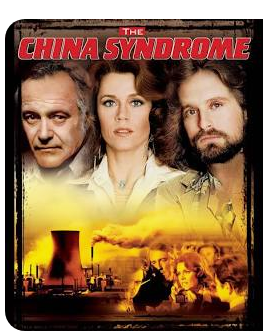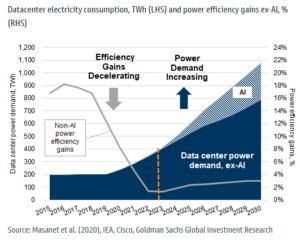The AI Revolution Is To Also Be Powered by…Nuclear Energy?
April 2, 2025
To Inform:

Poster for the movie “The China Syndrome”.
Back in 1979, a news reporter (Jane Fonda) and her camera operator (Michael Douglas) are unintentional witnesses to a SCRAM incident, an emergency core shutdown procedure at a nuclear power plant in California. The crew prevents a catastrophe, but the plant supervisor (Jack Lemmon) begins to suspect the plant is in violation of safety standards and tries desperately to bring it to the attention of the public, fearing that another SCRAM incident will produce an atomic disaster. The award-winning movie, The China Syndrome, opened 12 days before a real disaster at a Pennsylvania nuclear facility, better known as Three Mile Island.
More recently, nuclear accidents at Chernobyl (1986) and Fukushima (2011) led many governments to conclude that nuclear energy represents a danger that outweighs the benefit, leading to shelving energy projects throughout Japan and Europe and declining public support for nuclear energy in the United States.
However, a revolution in the ability of computer systems to perform tasks that typically require human intelligence, such as learning, problem-solving, and decision making, has driven energy demand to such heights that nuclear energy is being revisited. That revolution is in the field of Artificial Intelligence or AI, something we’ve talked about in the past as it relates to the investment landscape. A key element in the use of this technology is the datacenters that help store and process the massive amounts of data and energy required for AI tools.
AI uses tremendous amounts of energy. As can be seen in the chart below, as efficiency gains have decelerated, data demand growth is driving a surge in datacenter power use, with AI acceleration expected to continue. In fact, the need for energy has pushed the nuclear energy industry to implement more safety protocols and designs to make nuclear energy even safer. For example, nuclear power plants are being created that utilize small modular reactors (SMR’s), which as the name suggests, are smaller than traditional nuclear power reactors. These reactors have a power capacity of up to 300 megawatts (Mwe) per unit, and often incorporate passive safety features, which rely on natural phenomena like gravity or convection to cool the reactor core in the event of a shutdown, reducing the need for active systems and human intervention.

Source: Masanet et al
The technology industry may start sharing plans, such as an opportunity to reopen the Three Mile Island nuclear power plant, with a goal of powering data centers and supporting artificial intelligence (AI) ambitions. And many governments seem to be once again embracing nuclear energy. For example, due to AI power demands, the US is extending the life of nuclear power plants previously set to be decommissioned, with the 2022 Inflation Reduction Act providing production tax credits to help extend the life of existing plants and incentivize innovation. Japan is also reversing the post-Fukushima stance to phase out nuclear, and India’s Department of Atomic Energy currently plans to deploy 50 small modular reactors in the country. For what it is worth, if we are going to commit to lowering the amount of carbon we use while looking to useful technologies like AI to power our future, nuclear energy should have a seat at the table.
Over the next several years and decades, AI will take an increasing role in shaping our society in general and the markets in particular. The Joseph Group Investment Team collects information about energy sources and uses from various subject matter leaders and market analysts, reviews how AI could potentially impact each sector and sub-sector from that collected information, then uses our collective judgment to act, spending our energy positioning the objective-based portfolios we have the privilege of managing for our clients.

Written by Jerry G. Brown, CFA, FRM, Senior Investment Analyst